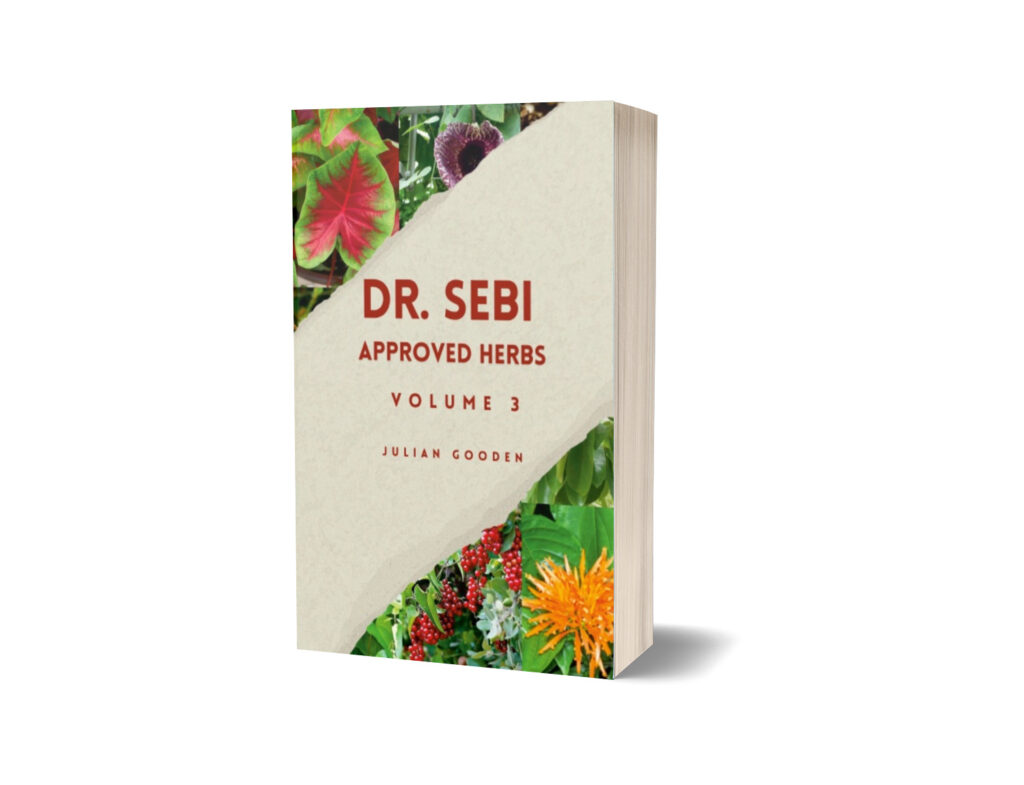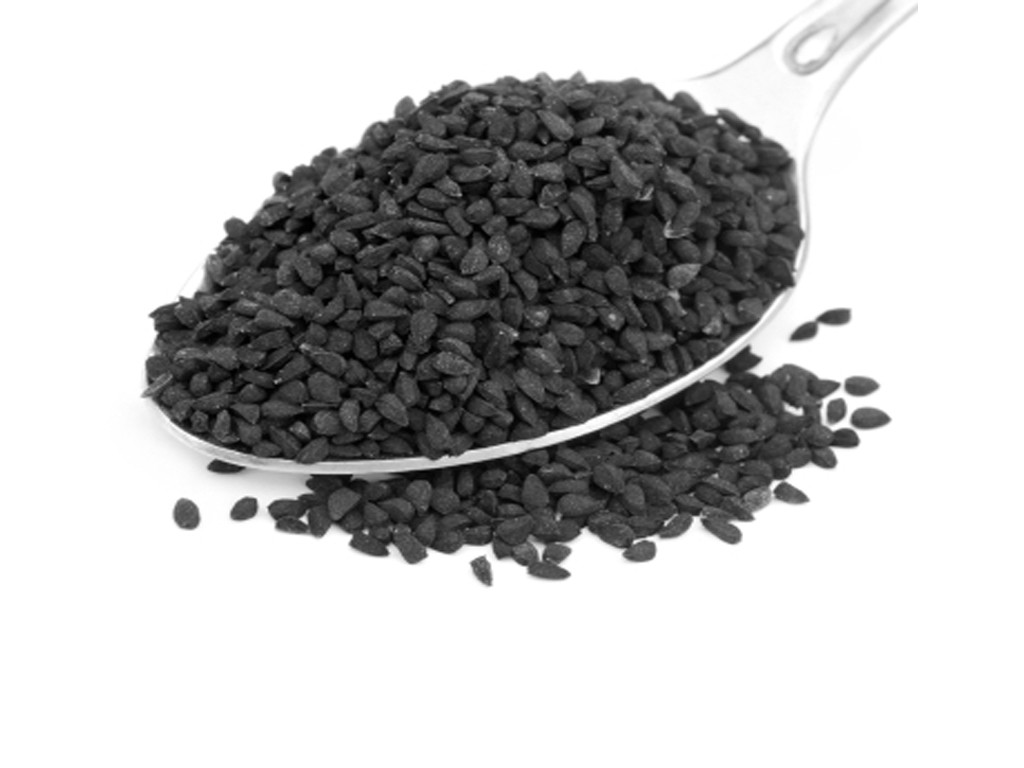Botanical Overview
- Scientific Name: Nigella sativa
- Family: Ranunculaceae
- Common Names: Black seed, black cumin, kalonji, nigella, Roman coriander
- Plant Type: Annual herbaceous plant
- Native Region: Southwest Asia, Mediterranean, and North Africa
- Description: A small plant, 20–30 cm tall, with finely divided, feathery leaves and pale blue or white flowers. Produces inflated capsules containing small, black, crescent-shaped seeds.
Historical and Cultural Significance
- Historical Use: Used for over 2,000 years in traditional medicine across Middle Eastern, African, and Asian cultures. Found in Tutankhamun’s tomb and referenced in ancient Egyptian, Greek, and Islamic texts.
- Cultural Relevance: Known as “the seed of blessing” in Islamic tradition, cited in a Hadith as a cure “for every disease except death.” Integral to Ayurvedic and Unani medicine for its versatile healing properties.
Chemical Composition
- Key Active Compounds:
- Thymoquinone (TQ): Primary bioactive, with antioxidant, anti-inflammatory, and anticancer properties.
- Thymohydroquinone: Neuroprotective and antimicrobial.
- Thymol: Antiseptic and antifungal.
- Nigellone: Bronchodilatory and antispasmodic.
- Fatty Acids: High in linoleic (omega-6) and oleic (omega-9) acids.
- Volatile Oils: 0.4–2.5% of seed, including p-cymene and alpha-pinene.
- Other Components: Alkaloids (nigellicines, nigellidines), flavonoids, saponins, and minerals (calcium, iron, potassium).
- Forms:
- Seeds: Whole or ground into powder.
- Oil: Cold-pressed from seeds, containing 30–50% fixed oils and 0.5–1.5% essential oils.
- Powder: Ground seeds, used in supplements or culinary applications.
- Extracts: Concentrated forms for capsules or tinctures.
Medicinal and Therapeutic Uses
- Traditional Uses:
- Digestive aid: Alleviates bloating, indigestion, and gas.
- Respiratory support: Eases asthma, bronchitis, and coughs.
- Immune enhancement: Boosts immunity and fights infections.
- Skin and hair: Applied topically for eczema, psoriasis, and hair growth.
- Modern Research:
- Antioxidant Effects: Thymoquinone reduces oxidative stress by neutralising free radicals.
- Anti-inflammatory: Inhibits pro-inflammatory cytokines, potentially aiding arthritis and allergies.
- Antimicrobial: Effective against bacteria (Staphylococcus aureus, MRSA), fungi (Candida albicans), and some microbes.
- Anticancer Potential: Thymoquinone induces apoptosis in cancer cells (e.g., breast, colon, pancreatic) and inhibits tumor growth.
- Cardiovascular Health: May lower cholesterol, blood pressure, and improve vascular function.
- Diabetes Management: Improves insulin sensitivity and reduces blood glucose.
- Neuroprotection: Shows promise in protecting against Alzheimer’s and Parkinson’s.
- Form-Specific Uses:
- Seeds/Powder: Chewed, brewed as tea, or added to food for digestive and immune benefits.
- Oil: Taken orally (1–2 tsp daily) or applied topically for skin/hair health.
- Capsules/Extracts: Standardised doses for targeted therapeutic use.
Nutritional Profile
- Seeds:
- Calories: ~525 kcal/100g
- Fats: 35–40% (mostly unsaturated)
- Carbohydrates: 30–35%
- Fibre: 5–10%
- Micronutrients: High in iron, calcium, phosphorus, and others.
- Oil:
- Rich in essential fatty acids (linoleic, oleic).
- Powder: Retains most seed nutrients but may lose volatile oils over time.
Culinary Uses
- Flavour Profile: Peppery, slightly bitter, with a nutty, earthy taste.
- Applications:
- Seeds: Sprinkled on flatbreads (e.g., naan, pita), used in spice blends like panch phoran, or added to curries, stews, and pickles.
- Powder: Incorporated into smoothies, soups, or baked goods for flavour and health benefits.
- Oil: Used as a salad dressing, drizzled over dishes, or mixed into beverages.
- Cultural Dishes: Featured in Egyptian dukkah, Turkish simit bread, and Indian spice mixes.
Preparation and Processing
- Seeds:
- Toasted lightly to enhance flavour before culinary use.
- Ground into powder for supplements or cooking.
- Oil:
-
Cold-pressed to preserve bioactive compounds.
- Quality indicators: Pure, organic, dark amber to black color, strong aromatic scent.
- Stored in dark glass bottles to prevent oxidation.
-
- Powder:
- Ground fresh to retain potency; stored in airtight containers away from light.
- Capsules/Extracts:
- Standardised for thymoquinone content; processed to ensure bioavailability.
- Dosage:
- Seeds: 1–3g daily (culinary or therapeutic).
- Oil: 1–2 tsp daily (oral) or diluted for topical use.
- Powder: 1–2g daily in food or supplements.
- Consult a healthcare provider for specific therapeutic doses.
Safety and Precautions
- Side Effects: Generally safe in moderation; high doses may cause gastrointestinal upset or allergic reactions.
- Contraindications:
- Pregnancy: Avoid high doses due to potential uterine stimulation.
- Hypotension: May lower blood pressure; caution for hypotensive individuals.
- Drug Interactions: May interact with anticoagulants, antidiabetic, or antihypertensive drugs.
- Allergies: Rare; test topically for oil or patch-test for other forms.
- Quality Control: Adulteration common in oils and powders; source from reputable suppliers.
Cultivation and Harvesting
- Growing Conditions:
- Thrives in well-drained, sandy loam soil.
- Prefers warm, sunny climates (USDA zones 8–11).
- Sown in spring, harvested in late summer when capsules brown.
- Sustainability: Low water needs, suitable for arid regions.
- Challenges: Susceptible to fungal diseases in humid conditions; requires pest management.
Fun Facts
- Often mistaken for cumin or caraway, but Nigella sativa has a unique flavour and composition.
- Historically valued as currency in some regions.
- Crescent-shaped seeds inspired use in ornamental gardening.

Blackseed Recipes
Below are several herbal formulas and traditional preparations that incorporate Nigella sativa (black seed) in various forms (seeds, oil, or powder) for medicinal and wellness purposes. These formulas draw from traditional practices (e.g., Ayurvedic, Unani, and Middle Eastern herbal traditions) and modern herbalism, combining black seed with other herbs to enhance its therapeutic effects. Note that these are general formulations based on historical and contemporary uses; always consult a healthcare professional before using for specific conditions, especially if you’re pregnant, nursing, or on medications.
1. Black Seed and Fennel Digestive Blend
Purpose: Relieves bloating, indigestion, and flatulence.
Ingredients:
- Black seeds (whole or ground): 1 tsp
- Fennel seeds: 1 tsp
- Wild mint leaves (dried): 1 tsp
- Optional: 1/4 tsp caraway seeds (for additional carminative effects)
Preparation:
- Combine equal parts of black seeds, fennel seeds, and wild mint leaves in a small bowl.
- Optionally, add caraway seeds for enhanced digestive relief.
- Grind lightly for a powder or leave whole for tea.
- Store in an airtight container.
Usage:
- Tea: Steep 1 tsp of the blend in 1 cup of hot water for 5–10 minutes. Strain and drink after meals.
- Powder: Take 1/2 tsp with warm water post-meal to ease digestion.
- Use 1–2 times daily as needed.
Notes: Fennel and wild mint are carminative herbs that complement black seed’s ability to reduce gas and bloating.
2. Black Seed and Chamomile Anti-Inflammatory Tea
Purpose: Reduces inflammation, soothes stress, and supports relaxation.
Ingredients:
- Black seeds (whole): 1 tsp
- Chamomile flowers (dried): 1 tbsp
Preparation:
- Mix black seeds, and chamomile in a small bowl.
- Store in an airtight container.
Usage:
- Steep 1–2 tsp of the blend in 1 cup of hot water for 8–10 minutes.
- Strain and drink 1–2 times daily, preferably in the evening for relaxation.
- Sweeten if desired.
Notes: Chamomile’s calming and anti-inflammatory properties pair well with black seed’s thymoquinone.
3. Black Seed and Fenugreek Blood Sugar Support Formula
Purpose: Supports healthy blood sugar levels and insulin sensitivity.
Ingredients:
- Black seed powder: 1 tsp
- Fenugreek seeds (ground): 1 tsp
- Optional: 1/4 tsp bitter melon powder (for enhanced blood sugar regulation)
Preparation:
- Combine all ingredients in a small bowl.
- Store in an airtight container away from light.
Usage:
- Mix 1/2–1 tsp of the blend into warm water, herbal tea, or a smoothie, 1–2 times daily.
- Alternatively, encapsulate the powder (using a capsule-filling machine) and take 1–2 capsules daily with meals.
Notes: Fenugreek is known for its blood sugar-lowering effects, complementing black seed’s potential in diabetes management. Monitor blood sugar levels closely if on antidiabetic medications.
4. Black Seed Oil Skin Rub
Purpose: Soothes eczema, psoriasis, or dry skin; promotes wound healing.
Ingredients:
- Black seed oil: 2 tbsp
- Calendula-infused oil: 1 tbsp (anti-inflammatory and skin-healing)
- Optional: 5 drops lavender essential oil (for soothing and antimicrobial properties)
Preparation:
- Add black seed oil and calendula oil, in a container, stirring until fully blended.
- Add lavender essential oil (if using).
- Pour into a small glass jar.
Usage:
- Apply a small amount to affected skin areas 1–2 times daily.
- Patch-test first to rule out allergies.
Notes: Calendula enhances skin repair, while black seed oil’s thymoquinone reduces inflammation and fights infection.
5. Black Seed and Milk Thistle Liver Detox Blend
Purpose: Supports liver health and detoxification.
Ingredients:
- Black seed powder: 1 tsp
- Milk thistle seeds (ground): 1 tsp
- Dandelion root (dried): 1 tsp
Preparation:
- Mix equal parts of black seed powder, milk thistle, and dandelion root.
- Store in an airtight container.
Usage:
- Tea: Steep 1 tsp of the blend in 1 cup of hot water for 10 minutes. Drink 1–2 times daily.
- Powder: Mix 1/2 tsp into warm water or juice, 1–2 times daily.
Notes: Milk thistle and dandelion root support liver function, complementing black seed’s antioxidant properties. Avoid if you have gallstones or bile duct issues without medical advice.
Safety and Precautions
- Dosage: Stick to recommended amounts; excessive black seed (especially oil) may cause gastrointestinal upset or lower blood pressure.
- Contraindications:
- Avoid high doses during pregnancy due to potential uterine stimulation.
- Use caution with blood pressure, blood sugar, or anticoagulant medications, as black seed and other herbs (e.g., fenugreek) may interact.
- Allergies: Test topical applications on a small skin patch. Discontinue if irritation occurs.
- Quality: Use organic, high-quality black seed products (seeds, oil, or powder) to avoid adulteration. Check for cold-pressed oil and pure, non-irradiated seeds/powder.
- Consultation: Always consult a healthcare provider before combining with medications or treating specific conditions.
References
- Peer-reviewed studies on thymoquinone (Journal of Ethnopharmacology, Phytotherapy Research).
- Traditional texts: Ibn Sina’s Canon of Medicine, Ayurvedic pharmacopoeia.
- Clinical trials and herbal compendiums (PubMed, Web of Science).
This article is copyrighted by Ital is Vital, 2025. Want to re-post this article? Visit our guidelines.
DISCLAIMER: THIS WEBSITE DOES NOT PROVIDE MEDICAL ADVICE
The information, including but not limited to, text, graphics, images and other material contained on this website are for informational purposes only. The purpose of this website is to promote broad consumer understanding and knowledge of various health topics. It is not intended to be a substitute for professional medical advice, diagnosis or treatment. Always seek the advice of your physician or other qualified health care provider with any questions you may have regarding a medical condition or treatment and before undertaking a new health care regimen, and never disregard professional medical advice or delay in seeking it because of something you have read on this website.
